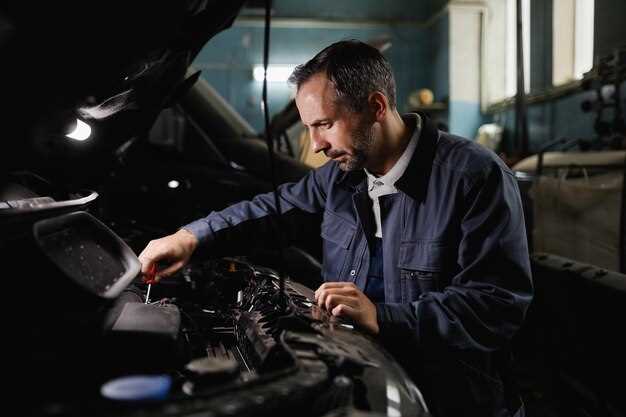
How to know when your engine needs a tune-up
- Dominique Kaye
- 0
- Posted on

Just like our bodies require regular check-ups to maintain optimal health, vehicles also need routine maintenance to ensure their engines function smoothly. A tune-up is an essential aspect of vehicle care that can help prolong the life of your engine and improve its performance. Recognizing the signs that indicate your engine is due for a tune-up can save you from costly repairs in the future and keep your car running efficiently.
One of the most significant indicators that your engine needs a tune-up is a noticeable decline in performance. If you experience a decrease in acceleration, rough idling, or stalling, these symptoms might point to underlying issues that require attention. Addressing these concerns promptly with a professional tune-up not only enhances your driving experience but also safeguards your investment.
Additionally, if you notice an increase in fuel consumption or the appearance of warning lights on your dashboard, it’s a strong signal that your engine’s health is at stake. Regular tune-ups help identify and rectify problems before they escalate, ensuring your vehicle remains dependable and efficient on the road. Staying vigilant about these signs can make a significant difference in the overall performance of your car.
Unusual Engine Noises Indicating Potential Issues
Paying attention to unusual engine noises is essential for maintaining your vehicle’s health. Sounds that deviate from the normal hum of a well-tuned engine can signify underlying problems requiring immediate attention. Identifying these noises early can prevent costly repairs and ensure optimal performance.
One of the more concerning sounds is a knocking or pinging noise, often indicating poor combustion or problems within the engine’s internal components. This can be a sign of inadequate fuel quality or timing issues, necessitating a tune-up for optimal function. Ignoring this sound could lead to severe engine damage.
Banging noises, particularly when acceleration occurs, can suggest loose or damaged components, such as the exhaust system or engine mounts. It’s crucial to address these quickly to avoid further complications. A proper inspection and tune-up can resolve these issues and restore your engine’s efficiency.
Squealing sounds, especially when starting the vehicle, may point to worn-out belts or pulley issues. Belt wear can affect various engine functions, and replacing them during a tune-up can prevent sudden engine failures.
Finally, if you hear a hissing or bubbling noise, it may indicate a coolant leak or overheating issue, which can severely impact your engine’s health. Addressing these symptoms promptly with a tune-up could save your engine from serious damage.
Changes in Fuel Efficiency: What to Look For

When assessing the health of your vehicle, one of the most telling signs that it may be due for a tune-up is a noticeable decline in fuel efficiency. Several indicators can alert drivers to this issue, prompting timely maintenance.
First, monitor your mileage. If you find yourself refueling more frequently without any increase in driving distance or changes in driving habits, this could indicate that your engine is not operating efficiently. A decrease in miles per gallon (MPG) suggests a potential need for a tune-up.
Next, pay attention to any unusual smells or emissions. A sudden increase in exhaust fumes or a distinct odor, such as a rotten egg smell, may point to incomplete fuel combustion. This inefficiency often stems from issues with spark plugs or fuel injectors, which can be resolved during a tune-up.
Lastly, listen for any engine noises that seem out of the ordinary. Knocking, pinging, or rough idling can indicate that your engine is struggling to maintain optimal performance, directly affecting fuel consumption. Addressing these sounds during a tune-up is essential for restoring proper fuel efficiency.
By being vigilant and recognizing these changes, you can ensure your vehicle remains in good health and operates at its best, ultimately saving you money at the pump.
Dashboard Warning Lights: Immediate Steps to Take

When your dashboard warning lights illuminate, it signifies that your vehicle requires immediate attention to maintain its health. Ignoring these alerts could lead to more significant issues down the line, thus underscoring the importance of a timely tune-up.
Firstly, identify the specific warning light that is activated. Common lights include those for the engine, oil pressure, battery, and brakes. Each light has a distinct meaning that corresponds to a particular component or system in your car. Once identified, refer to your owner’s manual for specific guidance related to that warning.
If the “Check Engine” light appears, it is advisable to conduct a thorough inspection as it may indicate a variety of problems ranging from a loose gas cap to a more serious engine malfunction. In such cases, schedule a tune-up as soon as possible to diagnose and remedy the underlying issue.
For oil pressure warnings, check your oil level immediately. Low oil levels can cause severe engine damage if not addressed promptly. If the light persists despite having adequate oil, visit a mechanic to assess potential leaks or pump issues.
The battery warning light signals that the electrical system may be failing. Make sure the battery connections are tight and examine for corrosion. If the problem remains, testing the battery and alternator is crucial to prevent being stranded.
Moreover, any indication related to the brake system should not be overlooked. This warning could mean low brake fluid levels, worn brake pads, or more complex brake system failures. Prioritize addressing this issue to ensure your safety on the road.
In summary, dashboard warning lights are critical alerts that require immediate action. Regular tune-ups are essential not only for responding to these warnings but also for preserving the vehicle’s overall health and performance. Always act quickly when these lights illuminate to avoid serious mechanical failures.
